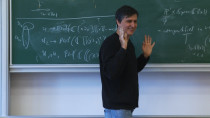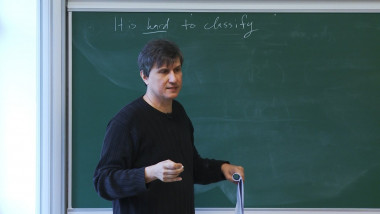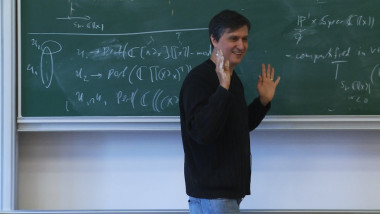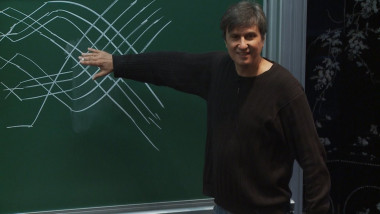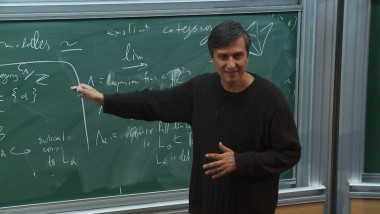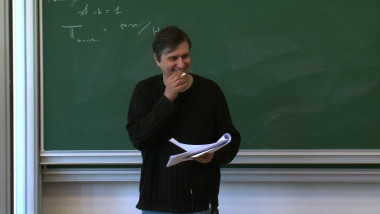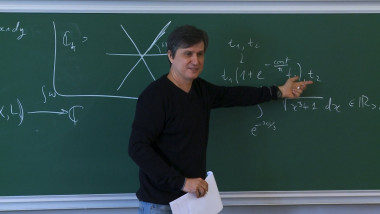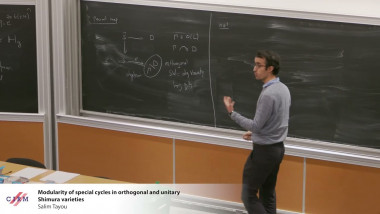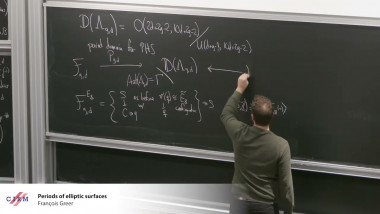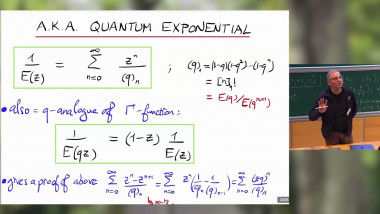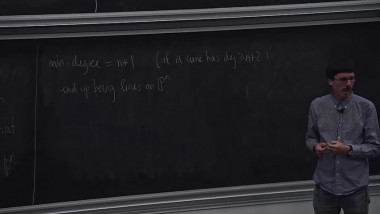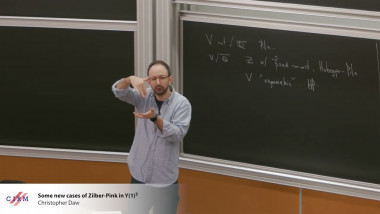3/6 Resurgence and Quantization
There are two canonical quantizations'' of symplectic manifolds:
- Deformation quantization, associating with any ($C^\infty$, analytic, algebraic over field of characteristic zero) symplectic manifold $(M,\omega)$ a sheaf of catgeories, which is locally equivalent to categories of modules over quantized algebras $\mathcal{O}_M[[\hbar]]$ where thePlanck constant'' $\hbar$ is formal parameter.
- Fukaya category $\mathcal{F}(M,\omega)$ associated to a \emph{real} $C^\infty$ symplectic manifold, with the morphism space between objects corrsponding to Lagrangian subvarieties $L_1,L_2\subset M$ given by Floer homology $HF(L_1,L_2)$. This is an $A_\infty$-category (an analog of triangulated category) linear over the Novikov field consisting of formal sums $$c_1 e^{-\frac{A_1}{\hbar}}+ c_2 e^{-\frac{A_2}{\hbar}}+\dots, \quad \text{ where } c_i\in \mathbb{Q},A_i\in \mathbb{R},\lim_i A_i=+\infty$$
The goal of my course is to unify these two quantizations, proposing the following conjecture, a generalization of Riemann-Hilbert correspondence (joint work with Y.Soibelman): For a symplectic algebraic variety $(M,\omega)$ over $\mathbb{C}$ together with an approriate data at infinity, the formal deformation quantization gives an analytic in $\hbar$ family of categories of holonomic modules over the quantized space, and this family of categories for $\hbar\ne 0$ is equivalent to the Fukaya category of $M$ considerd as a $C^\infty$ manifold, endowed with the symplectic form $\Re(\omega/\hbar)$ and $B$-field $\Im(\omega/\hbar)$.
The general construction is a mixture of Fukaya categories, deformation quantization and of wall-crossing formalism. As a corollary we obtain the resurgence properties of WKB solutions, conjectured long time ago. Exponentially small corrections coming from pseudo-holomorphic discs, upgrade a divergent formal power series in $\hbar$ to a holomorphic function.











